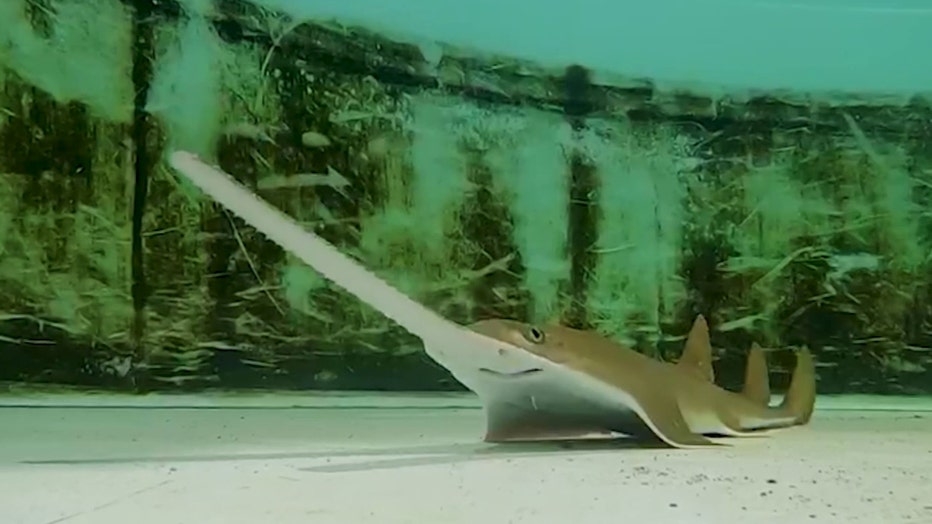Scientists determine what caused sawfish to act strange, die

Understanding strange sawfish deaths
Months after dozens of endangered sawfish started mysteriously dying, researchers say toxic algae could be to blame. FOX 13's Aaron Mesmer explains.
TAMPA - A group of marine scientists may have finally determined what caused dozens of sawfish in Florida waters to exhibit unusual behavior and die off during the last several months.
According to a study conducted by a team of experts, the sawfish likely died from multiple species of dinoflagellates, which is a type of algae that produces a neurotoxin.
"Most likely it's algae based neurotoxin, powerful ones, that primarily affect the animals through the gills," said Dr. Dean Grubbs, with FSU's Coastal and Marine Laboratory, who has been studying the sawfish situation.
Grubbs explained the algae is typically adhered to underwater plants, like seagrass, but became detached and were inhaled by marine life.
Experts believe as many as 80 species of marine life were impacted, causing them to experience similar behavior, including swimming in circles.

"Why did the algae become suspended or dislodged from the plants they were attached to? We don't really know that," said Grubbs. "It could be related to some current or storm issue or turbulence issue. It could be related to temperature. I think that's the next step is to figure out why this happened in such a concentrated way this past year."
Grubbs said sawfish appear to have been the most impacted, with more than 50 dying since last fall, including 43 this year. He told FOX 13 that might not seem like a big number, but this is a vulnerable endangered species.
"We're talking about an adult population that is probably in the hundreds to low thousands," he said. "They are large animals that that can be a pretty big chunk of the of the population."
RELATED: Mote rescues sawfish, scientists working to determine cause of sickness
In a statement to FOX 13, Florida Fish and Wildlife, which discussed the issue during its meeting Tuesday, said:
"While the exact cause, or causes, of the spinning behavior and sawfish mortality in the Florida Keys remains unknown, FWC and its partners continue to investigate the potential role of Harmful Algal Bloom (HABs) species, given that several endemic HAB species (including Gambierdiscus spp., Protoceratium reticulatum, Pyrodinium bahamense, Coolia sp., Ostreopsis sp., multiple Prorocentrum species, and Pseudo-nitzschia spp.) were identified in water and benthic samples. Partners with the University of Southern Alabama detected HAB associated algal toxins in both water and fish tissues. More work is needed to determine whether one or more of these species and toxins are the cause of the unusual behavior. A variety of benthic algaes likely contributed to this event, however, it remains to be seen whether these were the cause of the event."
STAY CONNECTED WITH FOX 13 TAMPA:
- Download the FOX Local app for your smart TV
- Download the FOX 13 News app for breaking news alerts, latest headlines
- Download the SkyTower Radar app
- Sign up for FOX 13’s daily newsletter

